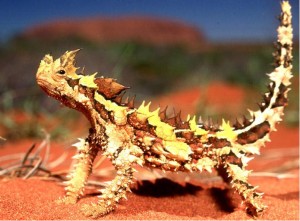SATURDAY, 12 MARCH 2011
Convergent evolution occurs when unrelated organisms evolve similar biological traits in similar environments but from very different starting points. Some of the most intriguing examples include the similarity in structure between human eyes and those of octopi, and the startling resemblance that Australia’s thorny devil lizard bears with North America’s desert horned lizard [1]. The evolution of powered flight is another example, as wings have evolved independently at least four times in the animal kingdom: in birds, bats, insects and the now extinct pterosaurs.
The website has been several years in the making, and is the first of its kind in the field. It was designed with an aim to provide an accessible informative website for the general public, as well as for the students and academics for whom it provides a valuable research and reference tool. The scientists behind the project hope that further study of convergent evolution will reveal a deeper order within living systems that may otherwise go unnoticed in evolutionary biology.
Written by Katy Wei

